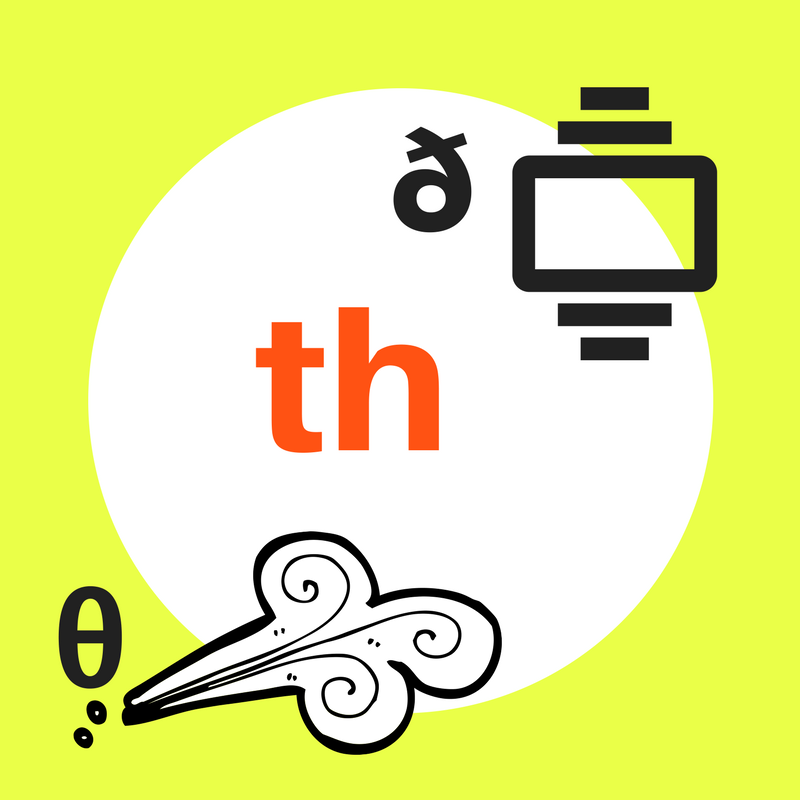Well hey there I'm Emma from mmmEnglish!
大家好呀,我是Emma,来自mmmEnglish!
In this lesson, I'll go over the pronunciation of the ‘th' sounds.
本节课,我将带领大家复习‘th’的发音。
I'll remind you how to make the sounds
我会提醒大家如何发音,
because actually there are two sounds made by the letters ‘th'
因为‘th’实际上有两种读音,
and I'll give you some guidelines to help you to decide when to use each sound.
我会给大家一些技巧,来帮助大家判断什么时候使用哪种发音。
And more importantly, we'll practise using these sounds in sentences because that's when it gets tricky.
更重要的是,我们将会在句子中练习这些发音,因为在句子中会变得比较复杂。
Before we get started, I want to say a huge welcome to my newest subscribers
在我们开始之前,我想热烈欢迎新订阅我的频道的小伙伴们,
I'm looking forward to taking you on an English language journey.
我非常期待带你们踏上英语学习之旅。
If you haven't subscribed to my channel yet, then you can do it just by hitting that red subscribe button right there.
如果你还没有订阅我的频道,那就点击下方的红色订阅按钮关注我吧。
Okay so the ‘th' sounds are really common, really common in English, though, not many other languages use these sounds.
‘th’在英语中非常常见,尽管有很多其他语种并不使用这些发音。
So if you're having trouble pronouncing the ‘th' sounds, then don't feel bad about it, you're definitely not alone.
如果你发‘th’的音存在困难的话,不要沮丧,你不是一个人在战斗。
The good news is you can improve this sound and you can start to feel more natural as you're using it but you have to commit!
好消息是你在不断使用的过程中能改善自己的发音,并开始变得更加自然,但是你得多投入精力!
Improving your pronunciation is like going to the gym.
改善发音就像是去健身房一样。
The first time, you're gonna suck at it.
第一次将会是一团糟。
But each time that you go back and you work those muscles a little bit more, the easier it will get and the better you'll feel about yourself, right?
但是你每次回到健身房,越锻炼那些肌肉,越会变得得心应手,你自己也会感觉越来越好,对吧?
So remember, that the tongue is also a muscle and you need to strengthen it, you need to workout.
所以要记住,舌头也是肌肉,你需要不断强化它,你需要锻炼。
So let's review the position of the tongue.
让我们复习一下舌头的位置吧。
Open your mouth and push your tongue through, just a little.
张开嘴巴,伸出舌头,只伸出一点点。
Not like this, like this.
不是这样这么多,要像这样。

Put your finger there if you're unsure about where to stop your tongue.
如果你无法确定舌头应该停在哪个位置,就把手指放在那里。
Notice that the tongue is not completely relaxed, there's a little tension.
要注意,舌头并不是全然放松的,要有点紧绷。
If you rub the bottom of your teeth with your tongue, can you feel the tension in your tongue?
如果你用舌头摩擦牙齿底部的话,你能感受到舌头的紧绷感吗?
This is the same amount of tension that you need to hold the ‘th' position.
发‘th’音时的舌头的紧绷程度也是一样的。
The tongue is not completely relaxed, it's lifted and running through the middle of your mouth.
舌头并不是完全放松的,而是翘起来,从嘴巴中间穿过。
If your tongue is too high in the mouth, up behind your teeth, you'll make that /t/ or /d/ sound.
如果舌头在嘴中的位置过高,到达了牙齿上方,你会发出/t/或者/d/音。
And if your tongue is not coming through your teeth, if you keep it inside, you'll make a /s/ or a /z/ sound.
如果你的舌头没有穿过牙齿,而是在牙齿里面的话,会发出/s/或/z/音。
So you really must pay attention to the tip of your tongue, it must come through between your teeth.
所以你一定要注意舌尖,必须穿出牙齿。
Now as I mentioned, there are two ‘th' sounds, a voiced sound and an unvoiced sound.
正如我前面提到的,‘th’有两种发音,一种是浊音,一种是清音。
Now both of these sounds use exactly the same mouth position.
这两种发音的嘴巴位置是相同的。
It's just that the sound comes from a different place.
只是发生部位不同。
Voiced consonant sounds are made using the vocal cords.
浊辅音是用声带发声。
So once you've got your teeth and your mouth in position and you make a sound here, you should feel a buzzing.
所以只要发音时的牙齿和嘴唇的位置正确,就会感到嗡嗡声。
It might even tickle your tongue a little.
甚至可能觉得舌头有点痒。
Unvoiced consonant sounds are made by air pushing through your mouth.
清辅音是空气通过你的嘴巴进行发音的。
So it's the air that creates the sound.
是空气在发音。
So keep your tongue and your mouth in the same position, make sure you've got some air in your lungs and push the air through.
让你的舌头和嘴巴保持在相同的位置,保证肺部一定要有一点空气,然后将空气挤压出来。
So this is the unvoiced ‘th' sound.
这就是清辅音‘th’。
So when should you use the voiced or the unvoiced sound?
那什么时候该使用清辅音,什么时候该使用浊辅音呢?
That's a great question because both sounds are represented by the same letters.
确实是个好问题,因为这两个音的字母是相同的。
And I wish I had a simple answer for you,
我真希望能给你们一个简单的答案。
I know that you like it when I have a simple explanation of why this rule is like that and when you should use it
我知道,你们比较喜欢我能够简单解释为什么这个规则是这样的,什么时候用,
but unfortunately in this situation, there are lots of exceptions.
但很不幸,针对‘th’的发音,存在很多例外。
But there are some guidelines that I'm going to share with you,
但是我要与你们分享一些技巧,
guides that will help you to make a decision and help you to use the correct ‘th' sound.
能够帮助你们做出决定并使用正确的‘th’发音。
Remember they're guides, not rules
记住,是技巧,而不是规则。
but let's focus on the unvoiced sound first,
让我们先看看清音吧,
made with air.
借助空气发音。
So a ‘th' at the beginning of content words is usually an unvoiced ‘th' sound.
实义词词首的‘th’通常是清音。
So content words are words that provide the meaning in a sentence.
实义词就是在句中提供意义的词。
There are nouns, verbs, adjectives, adverbs.
有名词、动词、形容词、副词。
Words like:think and thought and thirsty and thankful and theory
比如说:思考、思想、口渴的、感激的、理论。
So the ‘th' at the start of content words is usually unvoiced.
所以实义词词首的‘th’通常是清音。












